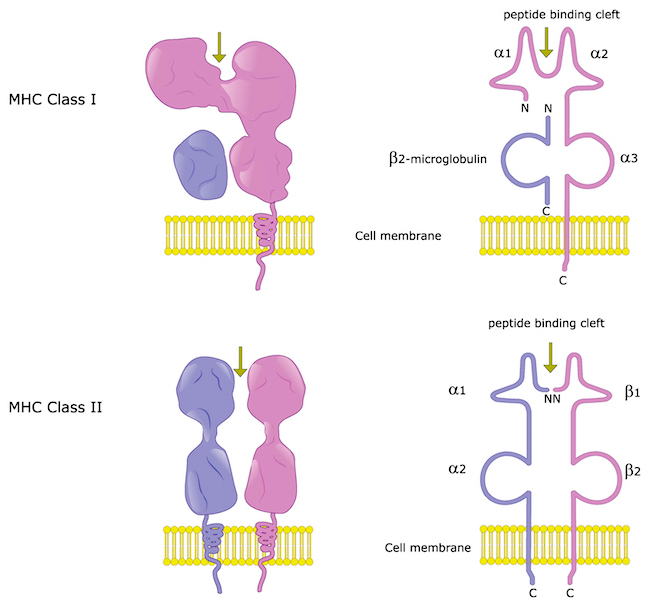T cell receptors (TCRs) are the antigen recognition machinery on the surface of T lymphocytes. TCRs form a cognate interaction with antigens presented via the major histocompatibility (MHC in mice) and Human Leukocyte Antigen complexes (HLA in humans) on the surface of somatic cells (Class I, HLA-A,B,C), and by professional antigen presenting cells of the innate immune system. TCR recognition activates downstream immune responses leading to robust adaptive immunity.

This process is a highly-integrated series of molecular signals leading to protective adaptive immunity. TCRs recognizing tumor antigens with high avidity can be exploited for immunotherapy, either via isolation of reactive clones from patients, or by cloning and transduction of chimeric antigen receptors.
One common way to study human-specific antigen recognition is to utilize antigen experienced transgenic HLA mice. Identified TCRs can be selected out, cloned into expression vectors, and used for tumor antigen recognition in a more human-relevant context.
Transgenic HLA Mice in Immunotherapy Research
Immunization of transgenic HLA mice has been widely used to identify high-avidity T cell receptors for tumor antigens.Theobald et al. immunized HLA-A2.1 transgenic mice with epitopes derived from human p53 and isolated A2.1-restricted, tumor-reactive T cytotoxic lymphocytes specific for human p531. A p53-specific murine TCR was isolated from CTLs and cloned into a retroviral vector for gene transfer into primary human T cells. The engineered human T cells recognized and killed various human cell lines and fresh tumor cells2.
In another example, HLA-A2.1 mice immunized with different melanoma antigens were used to identify high-avidity TCRs. Leukocytes were obtained from patients with progressive, metastatic melanoma and transduced with one such anti-tumor TCR. The transduced leukocytes were reinfused into the patients as part of a clinical trial. 19% of patients treated with the engineered T cells expressing the identified mouse TCR demonstrated an anti-tumor response, including tumor regression3.
HLA transgenic mice have proven to be extremely useful in immuno-oncology research. These models capable of replicating human antigen-presentation with the epitope binding specificity of human HLA types will continue to be used in an increasing variety of ways. Traditional vaccine approaches, including epitope identification and validation, have been extended to cancer vaccine research. Efficacy studies to evaluate the anti-tumor activity of a cancer vaccine can even be performed directly in HLA transgenic mice.
For T cell immunotherapies, HLA transgenic mice have been used to identify sequences for high-affinity TCRs, enabling development of new CAR-T therapies. As immunotherapy research increases, these tools will become ever more vital.
















.jpg)

.jpg)
.jpg)
.jpg)
.jpg)





.jpg)


.jpg)
.jpg)




.jpg)




.jpg)

.jpg)




